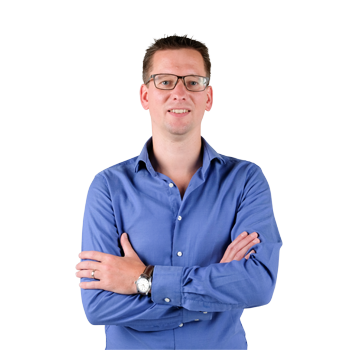There are many types of plants with which you can generate and store heat and electricity. It is combinations of these various means of production that ensures the energy supply. Of primary importance is that the supply must be reliable. Always. But which combination delivers the highest return at the right time for the lowest cost? And how do you substantiate the acquisition of a new means of production?
These are the sorts of questions that face Essent Local Energy Solutions (ELES), the business unit of Essent responsible for setting up energy solutions at the local level, such as plants for city heating, Hilversum Mediapark, plants for the market gardening sector and other major energy consumers. Daily, even hourly, ELES must make decisions about how to deploy production means. What’s the best mix? Which plant should supply the energy, and how much? And which plants should generate heat, or store it?
Variables
Finding the right utilization mix is extremely complex. Especially as there are many variables over which Essent has little or no influence. A hot or cold winter, for example; the purchase price of energy; clients’ heat and energy consumption; the number of start-stops a plant is allowed to make; and even local sustainability requirements and tax regulations. In addition, the type of plant plays a role. Do you use a boiler that can only convert gas into heat or opt for a cogeneration plant that produces less heat for the same gas consumption, but produces electricity at the same time? And then there’s the capacity of the buffers where the heat or cold is stored, and that may be called upon at any time. In short, finding the optimal use of production resources is a complex task. Let alone investment decisions about new plants.
Structured
Within ELES, ARM (Analysis and Risk Management) is the department that deals with these difficult decisions about investments, efficiency and security of supply.
"It had been apparent for a while that these difficult decisions require a structured, model-based approach,” explains Joris van Iersel, ARM team manager. “We developed the first model a few years ago, for the Mediapark. That was just a simple model in Excel, but for the first time it gave us the possibility to determine an optimum utilization mix per hour, as it were. But we couldn’t plan ahead. That was still a big disadvantage as buffer options, for example, but also fluctuations in gas and electricity prices, mean that decisions need to be taken in conjunction with one another on an hourly basis. So for example, if the price of electricity is high it might make financial sense to generate additional electricity locally at the cost of slightly higher gas consumption, and sell that electricity to the grid. The Excel model couldn’t provide us with that broader, tactical perspective.”
New model
A while back, Joris found in CQM the 'ideal partner' to help ARM develop a new planning model. The existing model for the Mediapark was analyzed and completely overhauled. It was also made generic, so it could be used for every ELES site.
In addition, CQM equipped the model to support investment decisions, for example when a new production means had to be added to a site. In which case, the model compares the available options in a number of scenarios and on the basis of the results selects the most suitable ones.
Possibilities
The planning model has already been used for several ELES entities. And has a useful spin-off, as the methodology can also be used to underpin day-trading decisions on the APX electricity market.
The model is also available in the form of a website for administrators who want to know whether they are deploying their means of production optimally. "The people at CQM are no energy experts, but their logical and analytical way of thinking helps us enormously to find links and analogies," argues Harald Droog, asset manager at ARM. "As a result, we now have a set of modelling instruments that offers far more possibilities than we had initially set it up for."
Joris concurs. "The results to date have been enthusiastically received by the executive board, who feel we could even include it our service package we offer the market. After all, owners and users of local plants, such as many market gardeners, are also looking to achieve optimal use of their resources."


